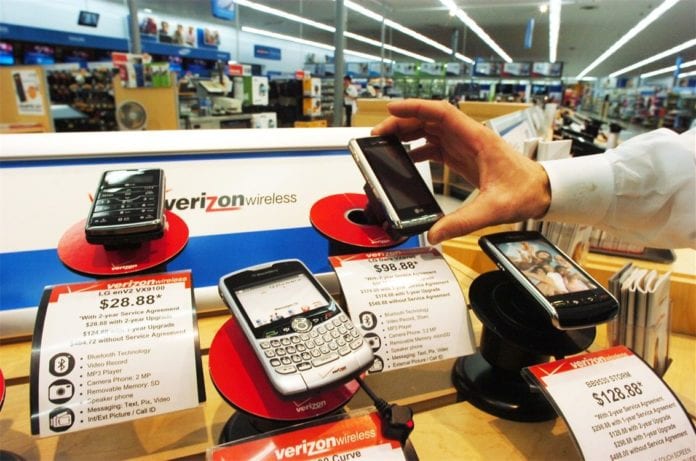If one thing can be drawn from third-quarter financial results from both Verizon Wireless and AT&T Mobility it’s that competitive pressures are impacting their abilities to retain “price-sensitive” consumers.
Executives from both carriers came out and said as much during conference calls following their respective third-quarter financial releases, indicating that there could be some potential for rivals playing in that space.
RCR Wireless News spoke with Bill Ho from 556 Ventures about third-quarter results from Verizon Wireless and AT&T Mobility and the impact those numbers could have on pending results from smaller rivals.
John Stephens, CFO and senior EVP at AT&T, explained that the carrier witnessed “some pressure with our more price-sensitive subscribers on low-end 2G feature phones,” a segment AT&T Mobility hopes to rectify through the pending acquisition of Leap Wireless. That deal, which is expected to close early next year, will see AT&T Mobility solidify its position in the no-contract space around Leap’s Cricket brand, and could see the end of AT&T Mobility’s recently launched Aio Wireless brand.
Stephens added that much of that “2G feature phones” lost were actually customers that had upgraded to a smartphone from the carrier, resulting in fewer customers on the low end, but more customers stepping up to pay the higher prices associated with smartphones. This also works well for AT&T Mobility as the carrier has said it would be looking to turn off its GSM-based 2G network by 2017 to free up additional spectrum assets for its 3G and LTE networks.
However, Stephens did note that there were also customers not interested in more advanced devices, and thus looking at other operators for their needs.
“There are some customers who are really price-sensitive, who are looking to others and we have come out with new plans both, in mobile share and in the tablet area to addresses those needs and try to give value on a reasonable basis to those customers, so I view this as kind of normal competitive process and with a great network, great customer service, we are going to be able to work through this very quickly,” Stephens explained.
The acquisition of Leap should also provide an avenue to re-capture these customers, with Bill Ho, founder of 556 Ventures, noting AT&T Mobility will be looking to re-create the model T-Mobile US has laid out through its acquisition of MetroPCS. That model includes the expansion of the MetroPCS footprint as well as the addition of a broader device portfolio.
Verizon Wireless, for its part, continues to virtually ignore the low-end of the market through its branded offerings, instead targeting that segment through resellers and mobile virtual network operator partners. Verizon Communications CFO Fran Shammo told investors there was a potential shift of its low-end and basic phone customers switching to either Verizon Wireless’ prepaid offering or to rivals that have aggressively targeted the no-contract space. This was witnessed by Verizon Wireless’ churn results increasing both sequentially and year-over-year.
“Now, I can’t sit here and tell you that we don’t lose customers to our competitors,” Shammo explained. “If you look at some of the other things that we were dealing with, I mean we do have some low end, if you will, some single-line basic phone customers and older 3G smartphone customers. And what we see the shift here is, we are seeing them shift out of postpaid into our retail prepaid products, but we are also seeing some of them shift off to some of the lower end price plans of our competitors.”
These confessions could be positive for smaller rivals that have staked a claim to more price-sensitive mobile services. That would include T-Mobile US and Sprint’s no-contract brands Boost Mobile and Virgin Mobile USA, as well as MVNO brands like Tracfone Wireless’ various offerings and prepaid services offered through big-box retailers like Walmart and Target.
T-Mobile US is seen as a bit of wild card in terms of Q3 results as the carrier is coming off a second quarter where it out-classed its larger rivals in customer additions. Whether that will continue through the most recent quarter remains to be seen.
More troubling could be results posted by Sprint, which has acknowledged it will likely continue bleeding postpaid customers through the rest of the year due to the recent shutdown of its iDEN network. However, one feather in Sprint’s cap remains its postpaid CDMA/LTE operations that did manage to post customer gains during the second quarter.
Bored? Why not follow me on Twitter?

